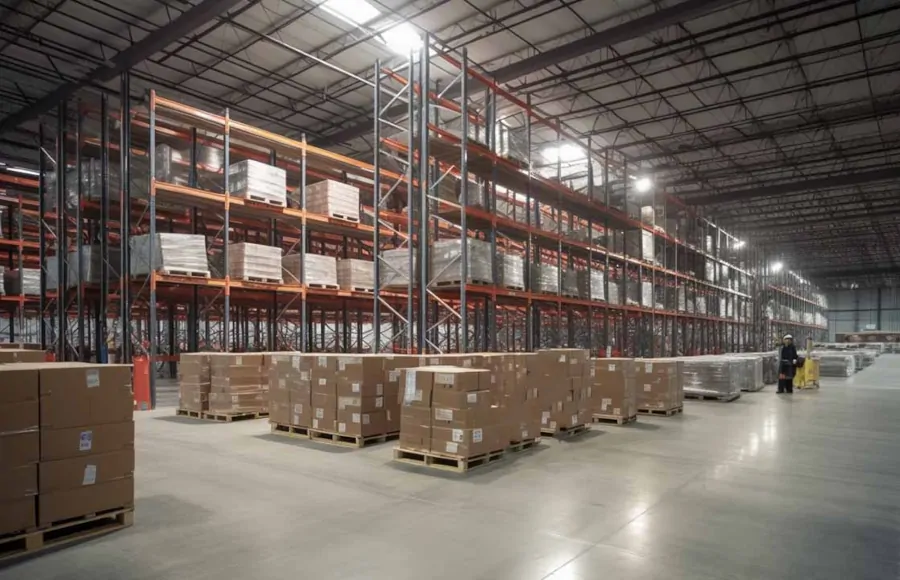In the ever-evolving landscape of transport and logistics, efficiency, reliability, and safety stand as paramount pillars for success. To uphold these standards, industries rely on a myriad of technologies, among which Computerized Maintenance Management Software (CMMS) emerge as indispensable tools. CMMS offers a systematic approach to managing maintenance operations, optimizing asset performance, and ensuring regulatory compliance. Let’s delve into the multifaceted applications of CMMS within the transport and logistics sector.
Fleet Maintenance and Management:
CMMS plays a pivotal role in maintaining the integrity of transportation fleets, whether they comprise trucks, ships, aircraft, or trains. By implementing MMS, companies can schedule routine maintenance tasks, track vehicle performance, and promptly address issues to prevent breakdowns. Through predictive maintenance algorithms, CMMS can forecast potential failures based on historical data, enabling proactive interventions that minimize downtime and enhance operational continuity.

Highlight how CMMS transforms fleet maintenance and management in transportation:
- Scheduled Maintenance: CMMS automates maintenance scheduling, ensuring routine tasks are done at optimal intervals, reducing breakdown risks.
- Performance Tracking: Real-time monitoring of vehicle metrics helps maintain operational efficiency, with alerts for deviations.
- Predictive Maintenance: By analyzing historical data, CMMS predicts potential failures, allowing proactive interventions and minimizing downtime.
- Condition Monitoring: Sensors feed data to CMMS, enabling real-time assessment of asset health, facilitating early issue detection.
- Compliance Management: CMMS ensures regulatory compliance by documenting maintenance activities, crucial for audits and safety standards.
In essence, CMMS revolutionizes fleet maintenance and management in the transport and logistics industry by streamlining maintenance processes, optimizing asset performance, and enhancing operational reliability. By leveraging CMMS capabilities, transportation companies can minimize downtime, reduce maintenance costs, and uphold the highest standards of safety and efficiency across their fleet operations.
Infrastructure Maintenance:

In the realm of logistics, infrastructure encompasses warehouses, distribution centers, and transportation hubs. Maintenance Management Software facilitates the upkeep of these critical facilities by streamlining maintenance workflows, managing spare parts inventory, and automating work order generation. With real-time monitoring capabilities, CMMS empowers stakeholders to detect anomalies in equipment functionality, address maintenance needs promptly, and optimize resource allocation for infrastructure maintenance.
CMMS transforms infrastructure maintenance:
- Streamlining Workflows: CMMS centralizes maintenance tasks, making it easy to manage and track work orders, ensuring efficiency and consistency.
- Spare Parts Management: With CMMS, spare parts inventory is a breeze, ensuring timely repairs and minimizing downtime with automated reorder triggers.
- Automated Work Orders: Say goodbye to manual work orders! CMMS automates scheduling based on predefined criteria, reducing the risk of unplanned downtime.
- Real-time Monitoring: CMMS offers real-time monitoring of equipment performance, detecting anomalies and issuing alerts for prompt action.
- Optimized Resource Allocation: By analyzing data, CMMS helps optimize resource allocation, prioritizing critical tasks to maximize uptime and minimize costs.
In summary, CMMS plays a crucial role in facilitating the upkeep and maintenance of infrastructure assets in the logistics industry. By streamlining maintenance workflows, managing spare parts inventory, automating work order generation, providing real-time monitoring capabilities, and optimizing resource allocation, CMMS helps ensure the reliability, efficiency, and safety of logistics facilities and transportation hubs.
Regulatory Compliance:

Compliance with regulatory standards is non-negotiable in the transport and logistics sector, where safety regulations and industry standards are stringent. CMMS serves as a comprehensive compliance management tool, helping organizations adhere to regulatory mandates, conduct regular inspections, and document maintenance activities. By centralizing maintenance records and audit trails, CMMS facilitates regulatory audits, ensuring that transportation assets and facilities meet statutory requirements.
Regulatory compliance is key in transport and logistics, and MMS is the secret weapon. Here’s how:
- Adherence to Mandates: CMMS keeps you in line with evolving regulations, ensuring your maintenance practices meet statutory requirements.
- Regular Inspections: With CMMS, scheduling and executing inspections is a breeze, ensuring your assets are always compliant.
- Documentation: CMMS helps you keep meticulous records of maintenance activities, a must for regulatory audits.
- Centralizing Records: CMMS centralizes your maintenance data, making it easy to access during audits and ensuring compliance transparency.
- Facilitating Audits: During audits, CMMS provides auditors with everything they need, showcasing your commitment to compliance.
CMMS takes the headache out of regulatory compliance, keeping your operations on the right side of the law.
In summary, CMMS serves as a comprehensive compliance management tool in the transport and logistics sector. Enabling organizations to adhere to regulatory mandates, conduct regular inspections, document maintenance activities, and facilitate regulatory audits. By centralizing maintenance records and audit trails, CMMS ensures transparency, accountability, and compliance with statutory requirements, thereby enhancing safety, reliability, and regulatory confidence in transportation operations.
Asset Lifecycle Management:

Transportation assets have finite lifespans, and effective asset management is crucial for maximizing their value and longevity. Computerized Maintenance Managemen system enables comprehensive asset lifecycle management by capturing asset data, tracking maintenance history, and facilitating informed decision-making regarding repair, refurbishment, or replacement. By analyzing asset performance metrics and maintenance costs. Organizations can optimize asset utilization, minimize total cost of ownership, and extend asset lifecycles.
- Capturing Asset Data: CMMS acts as a centralized hub for gathering comprehensive data on transportation assets. It records specifications, maintenance history, operating conditions, and performance metrics, providing valuable insights into asset utilization, health, and lifecycle stages.
- Tracking Maintenance History: CMMS meticulously documents the complete maintenance history of transportation assets, including activities, inspections, repairs, and upgrades. This historical data unveils performance trends, identifies recurring issues, and informs maintenance strategies, empowering organizations to optimize operations and extend asset lifecycles.
- Informed Decision-Making: CMMS facilitates data-driven decision-making regarding asset management, repair, refurbishment, or replacement. By integrating asset data, maintenance history, and performance metrics. CMMS enables organizations to assess asset condition, predict future maintenance needs, and evaluate cost-effectiveness, empowering stakeholders to make strategic decisions that maximize asset value and minimize total cost of ownership.
- Optimizing Asset Utilization: CMMS ensures assets are maintained optimally throughout their lifecycle. By scheduling preventive maintenance, prioritizing tasks, and addressing issues proactively. CMMS minimizes downtime, enhances reliability, and boosts asset utilization and productivity, thereby optimizing operations and performance.
- Minimizing Total Cost of Ownership: CMMS provides insights into asset performance metrics and maintenance costs. Enabling organizations to identify opportunities for cost optimization and efficiency improvements. By analyzing maintenance expenses, downtime costs, and lifecycle expenses, CMMS helps prioritize investments, minimize costs, and achieve greater financial sustainability and profitability over the entire lifecycle of transportation assets.
Supplier and Contractor Management:

In a complex ecosystem involving multiple stakeholders, effective management of suppliers and contractors is essential to ensure service quality and reliability. CMMS provides a centralized platform for managing vendor contracts, tracking service agreements, and monitoring contractor performance. By integrating supplier data with maintenance schedules, CMMS enables seamless collaboration and facilitates timely procurement of spare parts and services, thereby minimizing disruptions in operations.
Here’s how CMMS enhances supplier and contractor management:
- Centralized Platform: CMMS consolidates vendor information, contract details, and service agreements into one accessible location, offering stakeholders a comprehensive view of supplier and contractor engagements.
- Vendor Contract Management: CMMS streamlines vendor contract management by storing contract terms, renewal dates, and service level agreements. Automated reminders ensure proactive contract management and compliance.
- Tracking Service Agreements: CMMS tracks service agreements with suppliers and contractors, monitoring agreed-upon service levels, response times, and performance metrics to hold vendors accountable.
- Monitoring Contractor Performance: CMMS enables organizations to monitor contractor performance through performance metrics and user feedback, identifying high-performing contractors and addressing performance issues promptly.
- Seamless Collaboration: CMMS facilitates collaboration between internal maintenance teams and external suppliers and contractors by integrating supplier data with maintenance schedules and work orders, streamlining communication and enhancing transparency.
- Timely Procurement: CMMS automates inventory management and purchase order processes, ensuring timely procurement of spare parts and services. By tracking inventory levels and lead times, CMMS minimizes downtime and optimizes asset reliability.
In essence, CMMS revolutionizes supplier and contractor management in the transportation and logistics industry by providing a centralized platform for contract management, tracking service agreements, monitoring performance, facilitating collaboration, and ensuring timely procurement. By leveraging CMMS capabilities, organizations can optimize vendor relationships, enhance service quality, and maintain operational reliability in a dynamic and interconnected ecosystem.
Workforce Empowerment:

Empowering maintenance teams with the right tools and information is critical for enhancing productivity and operational efficiency. CMMS equips maintenance personnel with mobile applications and digital work orders, enabling them to access real-time asset data, report maintenance activities, and communicate seamlessly with supervisors. By leveraging CMMS, organizations can foster a culture of accountability, transparency, and continuous improvement among their workforce.
Workforce empowerment is essential for maximizing productivity and operational efficiency in maintenance operations. Here’s how CMMS facilitates workforce empowerment:
1. Mobile Applications:
CMMS provides maintenance personnel with mobile applications that enable them to access the CMMS platform from anywhere, at any time. With mobile access, technicians can view work orders, update asset information, and report maintenance activities directly from their mobile devices. This flexibility allows technicians to stay connected and productive, even when they are on the go or working in the field.
2. Digital Work Orders:
CMMS replaces traditional paper-based work orders with digital ones, streamlining the maintenance workflow and reducing administrative overhead. Digital work orders are created, assigned, and tracked within the CMMS system, ensuring that maintenance tasks are executed efficiently and accurately. Maintenance personnel can easily view work order details, record labor and materials used. And update work status in real-time, enhancing transparency and accountability.
3. Real-time Asset Data:
CMMS provides maintenance teams with access to real-time asset data, including equipment specifications, maintenance history, and performance metrics. By having up-to-date information at their fingertips, technicians can make informed decisions and take appropriate actions to address maintenance issues promptly. Real-time asset data also enables proactive maintenance interventions, minimizing downtime and optimizing asset reliability.
4. Seamless Communication:

CMMS facilitates seamless communication between maintenance personnel and supervisors through built-in messaging and collaboration tools. Technicians can communicate maintenance requirements, seek guidance, and escalate issues directly within the CMMS platform. Streamlining communication channels and reducing response times. This seamless communication fosters collaboration, teamwork, and efficient problem-solving among maintenance teams.
5. Culture of Accountability and Continuous Improvement:
By leveraging CMMS, organizations can cultivate a culture of accountability, transparency, and continuous improvement among their workforce. CMMS tracks maintenance activities, records performance metrics, and generates reports that provide visibility into maintenance operations. This data-driven approach encourages accountability among maintenance personnel and enables organizations to identify areas for improvement and implement corrective actions to enhance efficiency and effectiveness.
Summary
In conclusion, Computerized Maintenance Management Systems (CMMS) serve as indispensable assets in the realm of transport and logistics. Offering a comprehensive solution for managing maintenance operations, ensuring asset reliability, and enhancing regulatory compliance. By harnessing the power of CMMS, organizations can optimize resource utilization, minimize downtime, and uphold the highest standards of safety and efficiency in the dynamic landscape of transportation and logistics.